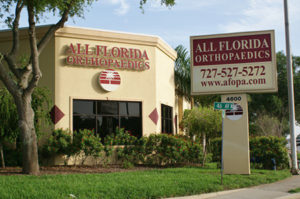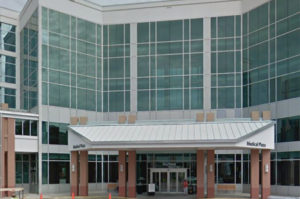GENERAL
How do I make an Appointment?
Simply call us at (727) 527-5272 during our working hours or you can request an appointment online using the patient portal.
Do I need a referral to make an appointment?
Check with your insurance company to see if a referral is necessary.
What do bring for your initial consultation?
For your initial consultation, please do not forget to bring any x-rays or MRI imaging or any other studies performed by other doctors or emergency rooms.
For your initial consultation you will need to bring a referral letter from your physician if necessary. We would be happy to assist you with this process.
Here is check list for your initial consultation
- Driver’s License or a valid ID
- Insurance information
- Referral Letter (if required)
- Reports, X-rays, MRIs, CT scans etc. and any other relevant information
- Bring actual CD with images or printed images of all X-rays, MRIs, CT scans, etc.
- List of all your medications (if any)
We encourage you to come to your initial consultation with a written list of questions to ensure you don’t forget to ask them when you are seeing the doctor.
Are my medical records kept private and confidential?
Your medical file is handled with the utmost respect for your privacy. Our staff is bound by strict confidentiality requirements as a condition of employment regarding your medical records. We will not release the contents of your medical file without your consent.
How long do I need time off work after the surgery?
The post-operative recovery period varies based on the particular surgery. Your surgeon will give you specific instructions to follow for a successful recovery.
How long before I can resume driving?
You should wait at least one week before driving after surgery. The effects of an anesthetic and surgery can affect judgment and reflexes during the first week following your surgery. Your surgeon will provide more specifics for your particular situation.
When can I resume exercise?
Your doctor will instruct you about post-treatment exercises – the type and the duration to be followed. You may be referred to a physical therapist to help with strengthening and range of motion exercises following surgery.
How do I contact after hours?
There will be a point of contact 24 hours a day for any concerns you may have. You will be provided with contact details following your treatment.
MEDICAL
What are the non-surgical treatment options?
The non-surgical treatment options include rest, medications including analgesics and antibiotics, injections, and physical/occupational therapy.
Will physical therapy be required after surgery?
Getting full range of motion, strength, and flexibility back after surgery usually takes time. That is where pre-operative exercise, education, and post-operative physical therapy programs come in – to ensure you are physically and emotionally prepared for surgery and to maximize your recovery after surgery.
What are the risks associated with surgery?
As with any surgery, risks include reactions to anesthesia, bleeding, infection, stiffness, and nerve damage. Your doctor will discuss the risks associated with your specific procedure.
When can I return to daily activities?
This varies depending on the type of procedure undergone and can range from a few days to a few months. Return to all activities, sports and exercise can take up to four to six months. Your doctor will advise you depending on your particular health condition.
What can happen if surgery is avoided?
Some complications of not undergoing an orthopaedic surgery for your condition include pain, loss of joint motion, joint weakness, numbness and an early onset of arthritis.
What are the most common injuries?
The most common orthopaedic injuries are sprains and strains, fractures, and dislocations. Injuries can occur when playing indoor or outdoor sports or while exercising. Sports injuries can result from accidents, inadequate training, improper use of protective devices, or insufficient stretching or warm-up exercises.
CASTS
Is My Cast Too Tight?
Getting a cast can leave you feeling a little anxious. They often fit tighter than you expect, which can leave you wondering if your cast is too tight.
It’s helpful to know how your cast should fit. This can help give you peace of mind and reduce anxiety. There are several things you can do at home to help keep you as comfortable as possible immediately following your injury.
Proper Cast Fit
Your cast should feel very snug, maybe even tight, for the first few days after your injury. This is normal. A cast is meant to help your injury heal by protecting it from movement. Feeling a reasonable amount of tightness means the cast is doing its’ job!
Signs Your Cast Is Too Tight
If your cast is too tight, you’ll probably know it after the first 72 hours. This does not happen often, but it’s good to know what to look for.
- Numbness, tingling, or burning in the injured extremity
- Pain or swelling that gets considerably worse over a short period of time
- Difficulty moving your finger and toes
- If capillary refill does not return to fingers or toes
How To Reduce Swelling
Swelling around the broken bone can increase anywhere from one to three days after the fracture. This will make the cast feel tighter. Swelling is best reduced by;
- Elevate your cast above your heart line if possible. This will help drain the blood and fluids away from the injured area. Use some spare pillows, cushions, or blankets to elevate your arm or foot so that you’re supported and comfortable
- Rest! Yes, it’s very important to rest as much as you can during the first few days of your injury! Overuse of an injured body part can stimulate blood flow to that area and increase the swelling.
- Gently exercise your fingers or toes.
PLEASE DO NOT ATTEMPT TO REMOVE YOUR CAST. IF THE CAST BECOMES BROKEN, PLEASE CALL THE OFFICE TO SCHEDULE AN APPOINTMENT.
This information is provided as an educational service and is not intended to serve as medical advice. Always seek the advice of your physician or other qualified health provider with any questions you may have regarding a medical condition.




